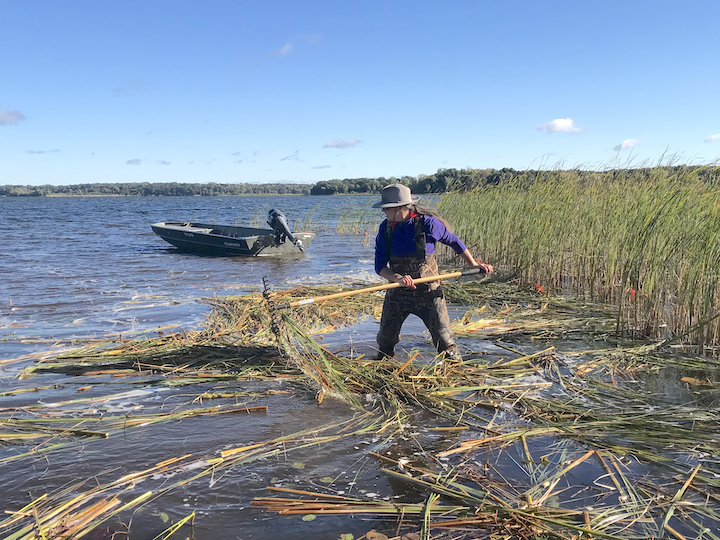
Minnesota Aquatic Invasive Species Research Center Announces Six New Projects
ST. PAUL – The Minnesota Aquatic Invasive Species Research Center (MAISRC) at the University of Minnesota announces the launch of six new research projects. These projects were selected as part of a competitive proposal process following a comprehensive research needs assessment conducted by MAISRC. The results of these projects will lead to better prevention of aquatic invasive species and improved management of Minnesota’s resources, including the species impacted by AIS. The projects include:
- Carp Remediation: Climate Change, Ecological and Economic Benefits, led by Dr. John Downing. This project will contrast lakes with and without carp to determine how carp impact carbon sequestration and greenhouse gas emissions, and determine the climate change and economic benefits of carp removal.
- Effective rusty crayfish removals to protect wild rice, led by Josh Dumke. This project will determine which trapping methods are most effective for protecting wild rice from rusty crayfish grazing and will evaluate long-term sustainability of localized removals through recapture of marked crayfish.
- Culturing Microalgae to Support Aquatic Invasive Control Species, led by Dr. Daryl Gohl. Zebra mussels require live algae to thrive in laboratory culture. Specialized methods to culture microalgae species will provide critical food for zebra mussels used in experiments to develop biocontrol technologies.
- Starry stonewort and wild rice: assessment and response, led by Dr. Dan Larkin. This project will assess the threat of starry stonewort to wild rice using empirical and modeling approaches and apply findings to Leech Lake Band of Ojibwe-led response efforts, supporting surveillance, outreach, and monitoring.
- Beyond the sign: Influencing recreational boaters required behaviors, led by Dr. Ingrid Schneider. This project will design and test innovative, engaging educational messaging and its ability to influence recreational boaters’ intentions to perform behaviors that prevent the spread of aquatic invasive species.
- Practical field-based tools for detecting high priority microbes, led by Dr. Nicholas Phelps. This project will address an urgent need for field-based detection tools for harmful invasive microbes and work with end- users to develop, validate, and deploy three practical and reliable LAMP assays.
MAISRC is proud that these projects bring in experts from numerous fields to build capacity and help solve AIS problems for Minnesota. These research projects are possible thanks to funding provided by the Environmental and Natural Resources Trust Fund, as recommended by the Legislative-Citizen Commission on Minnesota Resources (LCCMR).
The Minnesota Aquatic Invasive Species Research Center was founded in 2012 with funding from the Clean Water Fund and the Environment and Natural Resources Trust Fund and with the support of the Minnesota Legislature. Its mission is to develop research-based solutions that can reduce the impacts of aquatic invasive species in Minnesota by preventing spread, controlling populations, and managing ecosystems; and to advance knowledge to inspire action by others. Learn more about findings and current research at maisrc.umn.edu.
Contact: Ethan O’Brien
————————————————-
At the Minnesota Aquatic Invasive Species Research Center (MAISRC). A few highlights:
- Starry Trek is a statewide event focused on searching for one of Minnesota’s aquatic invasive species, starry stonewort. Check out the results from this annual event!
- MAISRC hosted the annual Aquatic Invasive Species Research and Management Showcase on September 21st. All presentations were recorded. You can watch a sneak peek of one presentation: “Refining copper-based treatment to suppress zebra mussel populations”, presented by Diane Waller, Angelique Dahlberg, and Matthew Barbour.
- MAISRC Researcher Julia Bohnen Receives Carol Mortensen Award
- Notes from the field with Meg Duhr
- Partner Organization: Call for Input on Invasive Species
- Staff Highlight: Alex Bajcz

